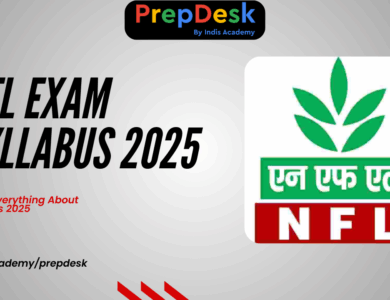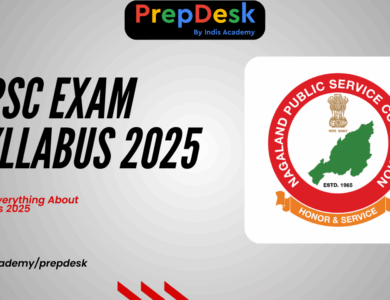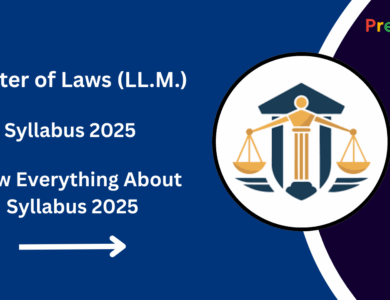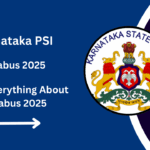Python Syllabus 2025 – Complete Course Outline, Modules & Topics
Explore the definitive Python Syllabus 2025: module-by-module breakdown from basics to advanced, with detailed topics, study objectives, and learning outcomes for students and professionals.

Python is the language of the future. Whether you’re aiming for a career in web development, data science, machine learning, automation, or app development — Python is the key skill you must acquire. This article offers a complete guide to the Python Syllabus including topic-wise details, semester/module-wise structure, marks, syllabus PDF download, recommended books, preparation strategies, and career paths.
Python is an interpreted, high-level programming language with a focus on code readability and rapid development. It supports multiple paradigms including:
- Procedural
- Object-Oriented
- Functional Programming
Created by Guido van Rossum, Python’s clear syntax and vast ecosystem of libraries have made it the most used language globally across domains like:
- Web development
- Data analytics
- Machine learning & AI
- Automation
- Cybersecurity
Python Course Overview
| Feature | Description |
|---|---|
| Course Name | Python Programming Course |
| Eligibility | 10+2 / Graduate / Diploma / Any Technical Background |
| Course Duration | 3 – 6 Months (varies by institution) |
| Mode of Learning | Online / Offline / Hybrid |
| Level | Beginner to Intermediate |
| Tools Used | Python IDLE, Jupyter Notebook, PyCharm, VS Code |
| Assessment | Quizzes, Assignments, Projects, Final Examination |
| Certification | Provided by institutes/online platforms |
Python Syllabus – Semester-Wise with Topics and Descriptions
To help you learn progressively, the syllabus is divided into three modules (semesters), each focusing on a set of foundational and advanced topics. The topic descriptions explain what you’ll learn and why it’s important.
Semester 1: Foundation of Python Programming
| Unit | Topic | Description | Marks |
|---|---|---|---|
| 1 | Introduction to Python | Overview of Python, its history, why it’s popular, setting up Python environment, writing your first program (Hello World). |
10 |
| 2 | Variables & Data Types | Introduction to variables, dynamic typing, and core data types (int, float, str, bool, complex). Type conversion and type() function. |
10 |
| 3 | Operators in Python | Arithmetic, comparison, assignment, logical, bitwise, identity (is), and membership (in) operators. Operator precedence and usage. |
10 |
| 4 | Conditional Statements | if, if-else, elif, and nested conditions. Real-world examples like grading systems or login validations. |
10 |
| 5 | Loops & Loop Control | Using for and while loops, nested loops, break, continue, pass, and range(). Practical usage in iterations. |
10 |
Total Marks – Semester 1: 50
Semester 2: Intermediate Python Concepts
| Unit | Topic | Description | Marks |
|---|---|---|---|
| 1 | Data Structures | Understanding mutable vs immutable types. Lists, tuples, sets, and dictionaries: creation, indexing, slicing, and built-in methods like append(), update(), etc. |
10 |
| 2 | String Manipulation | String slicing, concatenation, case conversion, searching, replacing, splitting, formatting with f-strings and format(). Regular expressions (intro). |
10 |
| 3 | Functions in Python | Defining and calling functions, arguments, return values, scope (local/global), *args, **kwargs, lambda, recursion. |
10 |
| 4 | File Handling | Open, read, write, and append files. File modes (r, w, a, rb, etc.), with context, working with text & binary files. |
10 |
| 5 | Exception Handling | Using try, except, else, finally. Common exceptions like ZeroDivisionError, IndexError, and how to raise custom exceptions. |
10 |
Total Marks – Semester 2: 50
Semester 3: Advanced Python Applications
| Unit | Topic | Description | Marks |
|---|---|---|---|
| 1 | Object-Oriented Programming | Understanding classes and objects, attributes, methods, __init__ constructor, inheritance, polymorphism, encapsulation, abstraction. |
10 |
| 2 | Modules and Packages | Using import, creating your own modules, built-in modules like math, random, and creating reusable code with packages and __init__.py. |
10 |
| 3 | GUI Programming (Tkinter) | Designing simple GUI applications using Tkinter widgets like labels, buttons, entries, and handling events (e.g. calculator GUI). | 10 |
| 4 | Database Connectivity | Using SQLite/MySQL with Python to connect databases, perform CRUD operations using sqlite3 or MySQL.connector. |
10 |
| 5 | Python Libraries Overview | Brief intro to popular libraries: NumPy (numerical), Pandas (data manipulation), Matplotlib (visualization), use-cases and basic operations. | 10 |
Total Marks – Semester 3: 50
Download Python Syllabus PDF
Click below to download the full Python Syllabus PDF 2025 with detailed semester-wise topics, descriptions, and marks distribution:
Top Recommended Books for Python
| Book Title | Author | Ideal For |
|---|---|---|
| Python Crash Course | Eric Matthes | Beginners |
| Automate the Boring Stuff with Python | Al Sweigart | Scripting Learners |
| Head First Python | Paul Barry | Visual Learners |
| Think Python | Allen B. Downey | Conceptual Learners |
| Fluent Python | Luciano Ramalho | Advanced Learners |
| Learning Python | Mark Lutz | Intermediate Level |
Preparation Tips to Master Python
- Start with Core Concepts: Understand variables, loops, conditions, and functions first.
- Practice on Coding Platforms: Use HackerRank, LeetCode, CodeChef, and Replit.
- Work on Mini Projects: Start with calculator, quiz app, to-do list, etc.
- Learn Python Libraries: Master NumPy, Pandas, Matplotlib, Flask, Tkinter.
- Stay Consistent: Code daily, engage in communities, and watch video tutorials.
Python Specialization Paths
| Specialization | Description |
|---|---|
| Web Development | Use Python with Flask or Django to build dynamic websites. |
| Data Science | Use NumPy, Pandas, Scikit-learn, and Matplotlib for analysis & visualization. |
| Machine Learning | Apply ML algorithms using TensorFlow, Scikit-learn, or PyTorch. |
| Automation/Scripting | Automate tasks like file handling, data entry, and email scheduling. |
| Cybersecurity | Write penetration tools, scripts for scanning, and ethical hacking modules. |
| Game Development | Use Pygame to create 2D games like ping pong, car racing, etc. |
| App Development | Build cross-platform apps using Kivy or BeeWare. |
FAQs on Python Syllabus
Q1. Is Python enough to get a job?
Yes. With practical skills, specialization, and real projects, Python opens doors in IT, data science, and automation.
Q2. Is Python hard to learn?
No. Python’s simple syntax makes it ideal for beginners and non-programmers.
Q3. Can I learn Python in 3 months?
Absolutely. You can master basics and work on projects within 3 months of consistent practice.
Conclusion
Python is the future of programming — its ease of use, versatility, and demand across industries make it a must-have skill. This complete syllabus guide helps you structure your learning journey with detailed topics, project ideas, recommended books, and specialization options.
Start your Python journey now, download the syllabus, and choose your career path with confidence. Whether you’re a beginner or an IT professional upskilling, Python will always pay off.





